Something about the game world in Sekiro: Shadows Die Twice makes it really come alive. Sneak around the shadows of Senpou Temple, Ashina Castle, Sunken Valley, or Mibu Village for long enough and you’ll see exactly what I mean. They almost feel more factual than fictional. The developer behind the game, FromSoftware, accomplished this remarkable feat by endowing its world with a strong sense of place.
We rarely distinguish between the two terms in everyday speech, but “space” and “place” aren’t actually synonymous. They convey completely different concepts. What exactly is the difference? Places are quite simply spaces into which people have introduced meaning through various forms of modification, transformation, and change. While spaces can exist on their own, places only ever come into being through the intervention of people. Spaces are nothing more than empty voids. Places have to be made.
We do it without even thinking, so it simply seems natural to us, but the shaping of space is actually quite complicated. Something happens when people turn spaces into places which you might not expect.
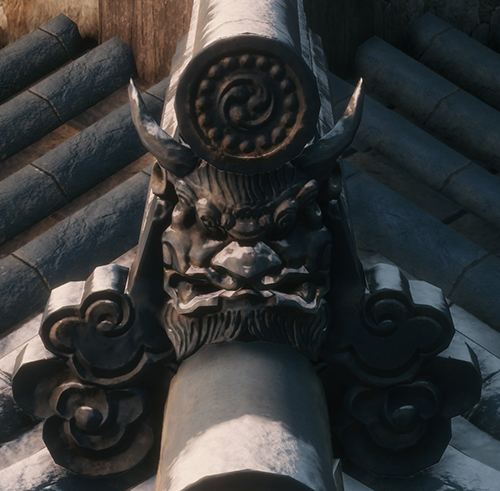
Japanese tradition to enrich Sekiro‘s sense of of place.
Credit: FromSoftware via Justin Reeve
Referred to as “placemaking,” the shaping of space involves a transfer of ideas and values into the world around us. This idea was first formulated by the philosopher Henri Lefebvre who pointed out in his 1974 book The Production of Space that “space is a social product.” Placemaking plays out at several different scales. People, for example, can customize individual apartments, but they can also modify entire landscapes. The planning of a city falls in between these two extremes. Reflecting the dominant perspectives of the people who inhabit them, structured spaces like cities, altered landscapes, and apartments are sites of cultural hegemony onto which the worldview of a society is written. They provide a sort of window into the heart, soul, and mind of a given group of people. Places in this particular sense could be called political. Read the writing on their walls and you’ll come away with a pretty clear picture of the people who produced them. As Lefebvre wrote, “the space of an order is hidden in the order of space.”
FromSoftware clearly wanted the game world in Sekiro to suggest its inhabitants held a certain set of ideas and values. As defined by the places they’ve supposedly produced, the people in Sekiro seem profoundly preoccupied with rank, status, and hierarchy. The developer gave expression to these preoccupations by establishing a series of spatially overlapping polarities. Showing up in its architecture and urban planning, aspects of these polarities can be observed almost anywhere in the game world. They’re what gives it such a strong sense of place.
While some of these polarities are pretty apparent, a few of them are actually quite subtle. Four in particular are worth pointing out: high/low, clean/dirty, planned/improvised, and atheist/animist. The positive poles are found in locations like Senpou Temple and Ashina Castle. The negative poles are found in locations like Sunken Valley and Mibu Village. You’ll come across mostly privileged people in the former and disadvantaged members of society in the latter. Expressed in the form of such spatially overlapping polarities, the game world is in other words structured by considerations of rank, status, and hierarchy. In the words of Lefebvre, “sociopolitical contradictions are realized spatially.”
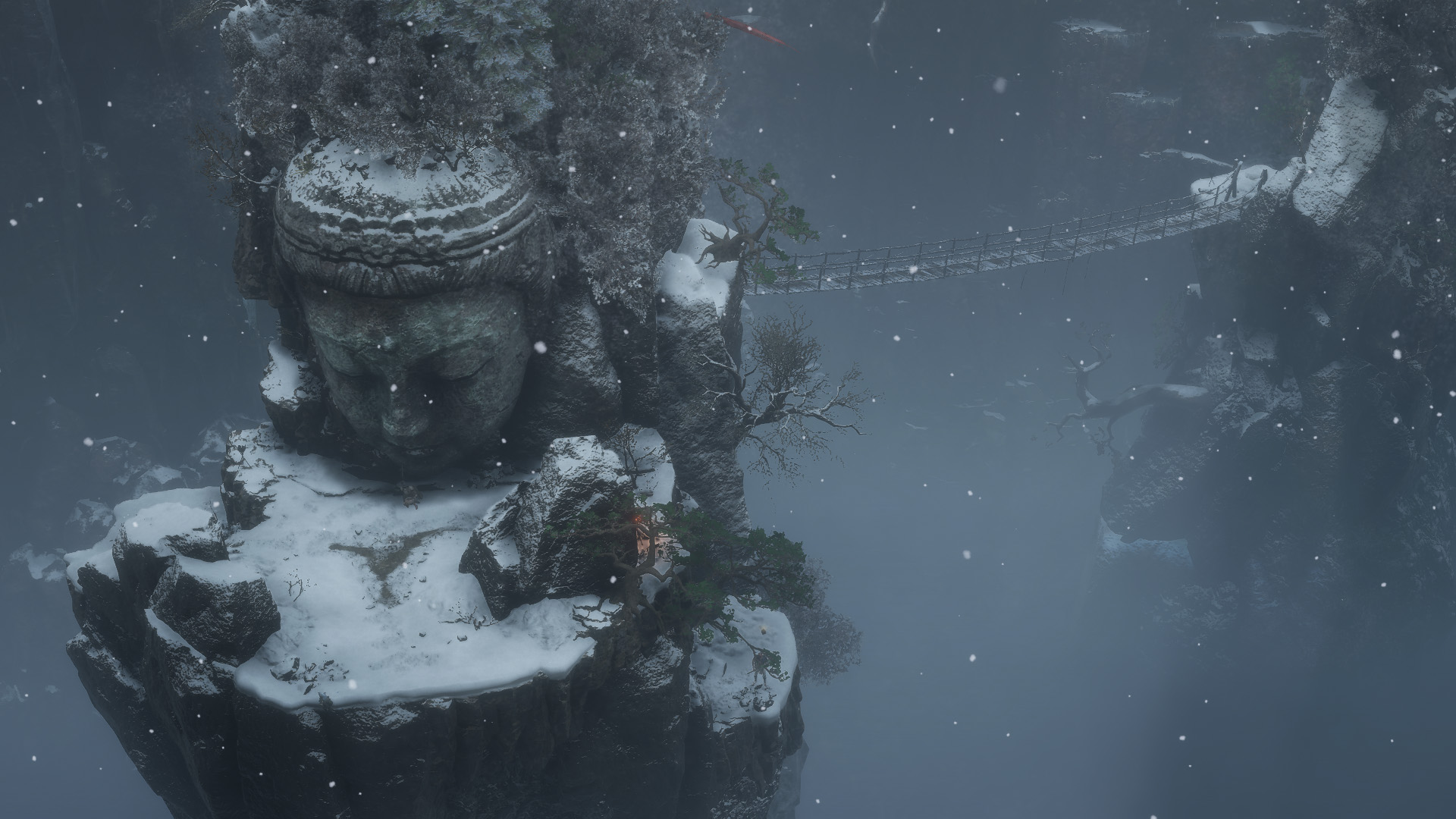
Credit: FromSoftware via Justin Reeve
The most readily apparent of these four polarities would have to be high/low.
The first building which you’ll see in the game is Ashina Castle. Filling your field of vision as you come out of a cave, the stronghold steals your attention like a star in the night sky. The most remarkable feature of this impressive structure is definitely its imposing size. With its tall towers and gargantuan gates, Ashina Castle rises high enough above the surrounding terrain that it seemingly floats on thin air. The same could easily be said for Senpou Temple. Sitting on a platform supported by a sturdy set of stilts, the buildings belonging to this compound compete with the peaks of Mount Kongo for pride of place among the clouds.
Ashina Castle isn’t the only stronghold you’ll come across in Sekiro. You won’t be able to explore it until somewhat later in the game, but there’s a very similar structure in Sunken Valley: the Gun Fort. In sharp contrast to Ashina Castle, this building is found well below ground. Situated in a deep depression, the stronghold clings like a vine to the edges of a steep cliff. You’ll definitely die if you try dropping straight down, but you’ll find Mibu Village at the bottom of this depression. While you can see sunshine from the stronghold in Sunken Valley, Mibu Village is meant to be so far below the surface that it’s even dark during daylight hours.
The most apparent polarity after high/low is probably clean/dirty.
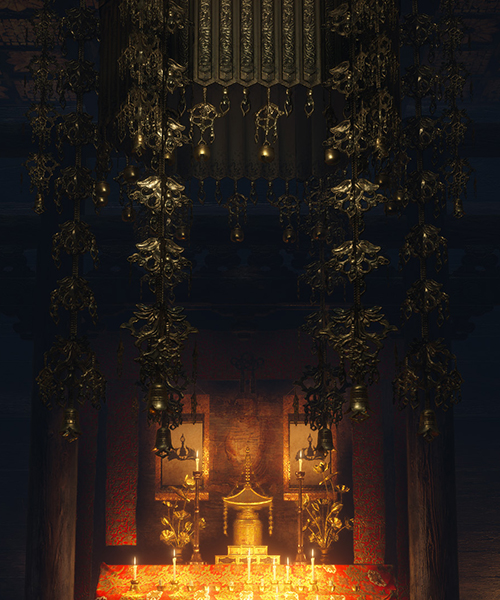
Credit: FromSoftware via Justin Reeve
Having recently suffered a siege, Ashina Castle has definitely seen better days, but it scarcely seems much worse for wear. Sneak around the stronghold and you’ll notice that everything is quite clean. The warriors have stored their weapons in the proper place. The bureaucrats have put their papers in the right room. The servants have scrubbed the floors pretty much spotless, too. Since they’re covered in cobwebs, the buildings belonging to the Senpou Temple compound aren’t exactly spotless, but they’re still rather spick and span. Things are clearly supposed to have been kept in good order. The prayer bells and incense burners, for example, could hardly be called clutter.
Mibu Village is a very different beast. Senpou Temple is quite clean if you can excuse the cobwebs, but Mibu Village is definitely what you’d call a mess. The houses are in complete chaos. The streets are filled with junk. There’s muck and mud as far as the eye can see. You won’t find anywhere near as much filth, but the situation in Sunken Valley isn’t much better. The stronghold for example is in a sorry state. Crumbling under the weight of its own clutter, the building is about as well organized as a preschool playpen. Take some time to explore the structure and you’ll come across a bunch of abandoned bins, baskets, and barrels.
There’s definitely some subtlety to the planned/improvised polarity.
Ashina Castle has all the hallmarks of the architectural style called sukiya. Tasteful in terms of decoration, the sukiya style is mostly characterized by ornamental simplicity, but structure and composition are also considerations. There’s nothing improvised about the sukiya style. Everything is planned. This means that you can identify it based on a few particular features. Rooms are entered through a type of sliding door known as a shoji. There’s always a shallow alcove called a tokonoma. Floors are covered with tatami mats. Beams are left exposed on the ceiling and walls. Some of these features can be seen in Senpou Temple, but they’re instantly recognizable in Ashina Castle.
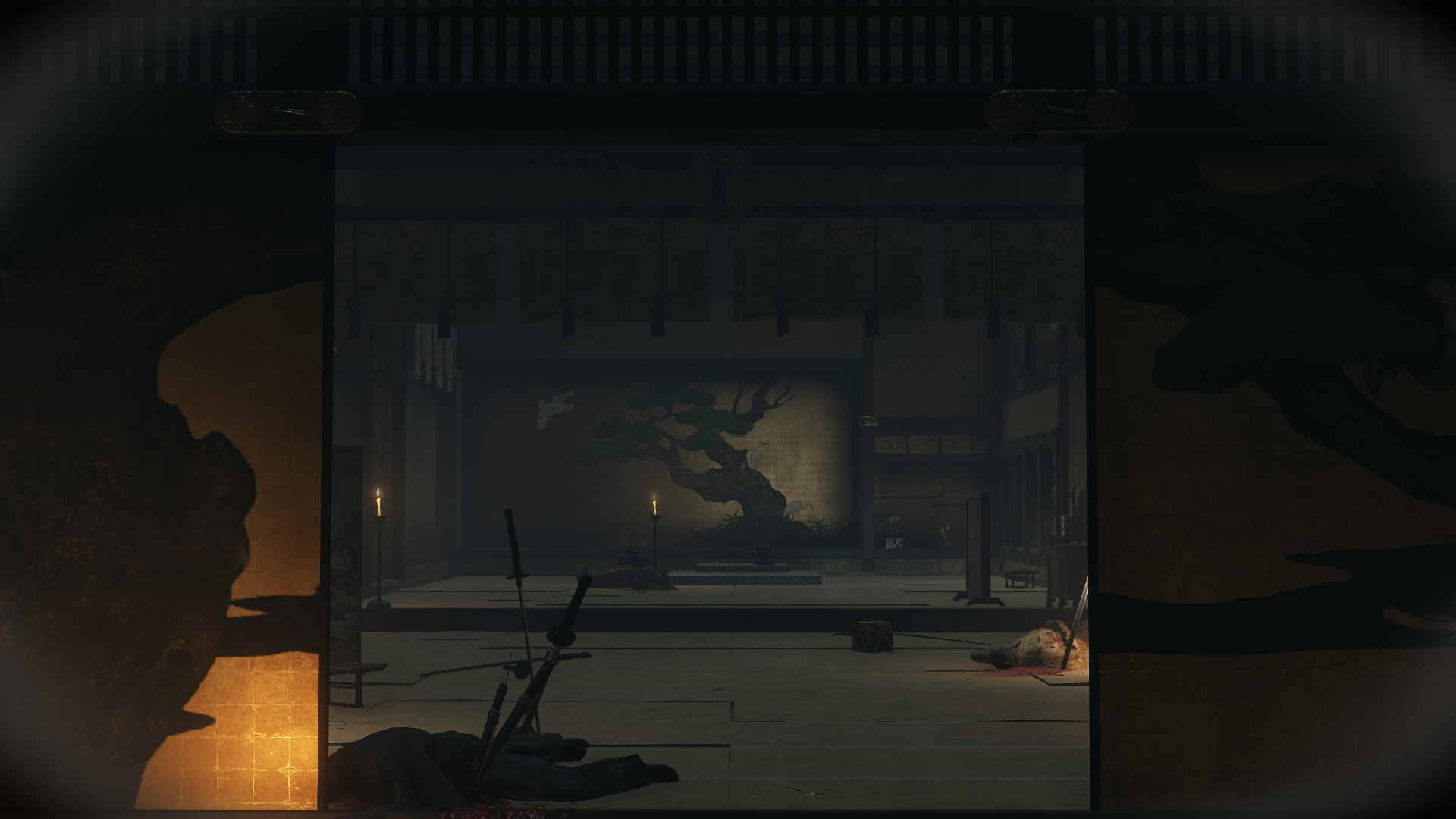
Credit: FromSoftware via Justin Reeve
Ashina Castle is characterized by the sukiya style, but Mibu Village is more what you’d call minka. Since the minka style is all about improvisation, it’s mostly known for inconsistency and irregularity. Nothing is planned. Structure and composition are determined by considerations like topography, so you’ll never come across two structures which are exactly the same. They aren’t quite one of a kind, but the houses in Mibu Village are still what you’d call minka. With its thatched roof, screen walls, and slightly raised floor, the house near the Wedding Cave seems like more of a compromise than a confrontation with the surrounding terrain. You could say the same thing for the stronghold in Sunken Valley.
The subtlest polarity is probably atheist/animist.
Buddhism has always been about big buildings. Featuring study and prayer halls called hattou and hokkedou, Buddhist temples are in many ways characterized by their impressive architecture. In addition to hattou and hokkedou, most also have a particular type of gate known as a mon. Some also have a tou pagoda. You can see all of these in Senpou Temple, but you’ll come across a couple of them in Ashina Castle, too. Step into the stronghold for example and you’ll soon find yourself staring at a pagoda. While there’s a clear difference between them in terms of scale, this tiny tou is for all intents and purposes identical to the more substantial structure in Senpou Temple.
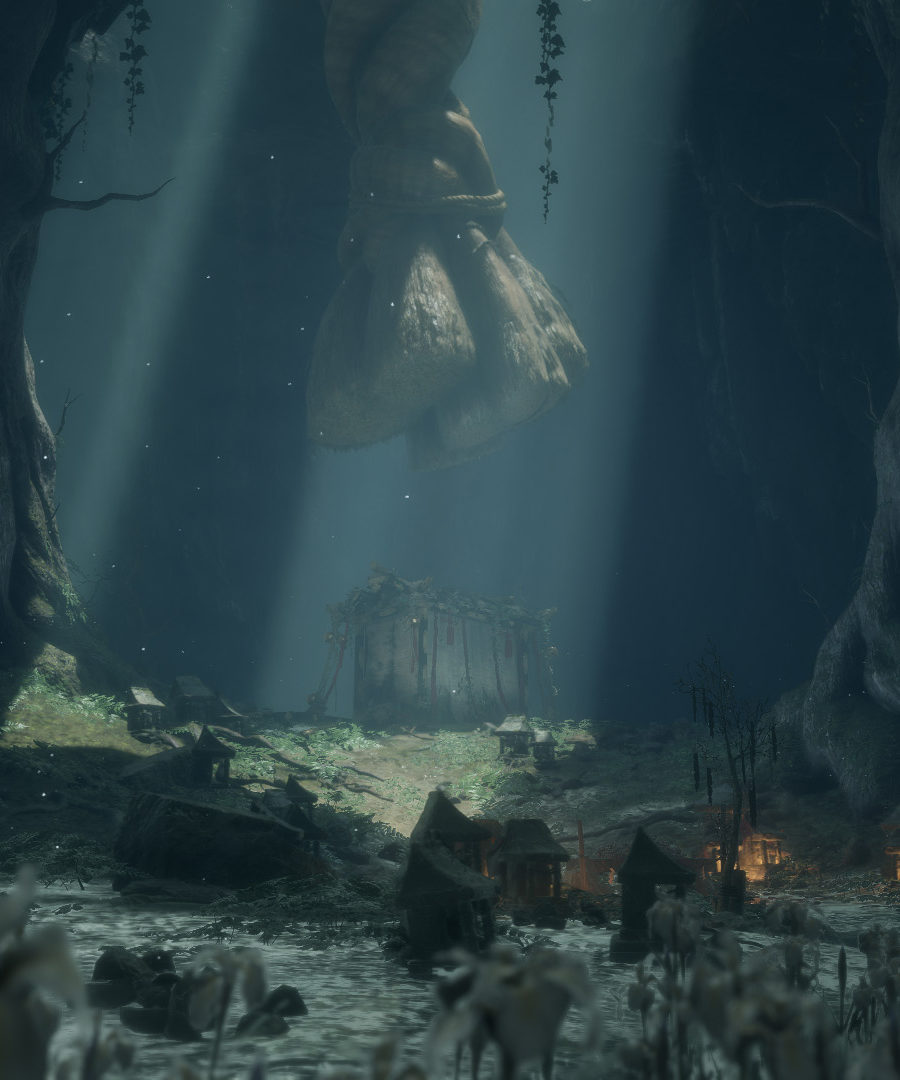
Credit: FromSoftware via Justin Reeve
Buddhism is all about buildings, but Shinto is mostly concerned with sanctuaries. These come in several different shapes and sizes. They can be anything from a clearing in the woods to a walled compound filled with shrines. They’re always surrounded by shimenawa, though. These ropes can often be found hanging from a type of gate known as a torii. They’re sometimes covered with paper streamers called shide. You’ll come across quite a few of these in Sunken Valley near the broken Buddhas, but the best example of a shimenawa is actually found in Mibu Village. Take a seat in the Wedding Cave and one of these might just spirit you away to another location.
FromSoftware endowed Sekiro with a strong sense of place. This involved establishing a series of spatially overlapping polarities in the architecture and urban planning of its world. The most notable of these are high/ low, clean/ dirty, planned/ improvised, and atheist/ animist. The positive poles are found in locations like Senpou Temple and Ashina Castle. The negative poles are found in locations like Sunken Valley and Mibu Village. Since you’ll come across mostly privileged people in the former and disadvantaged members of society in the latter, considerations of rank, status, and hierarchy could be said to structure the game world.
Why does it matter that FromSoftware gave the game world in Sekiro such a strong sense of place? The answer goes a bit beyond the edges of your screen.
Suggesting a preoccupation with rank, status, and hierarchy on the part of its people, the game world in Sekiro provides a reminder that structured spaces like apartments, landscapes, and cities have something to say about their inhabitants. They aren’t mute. Communicating a certain set of ideas and values, they provide a kind of window into the heart, soul, and mind of the people who produced them. In other words, the game world in Sekiro challenges you to think about how the worldview of your own society is expressed in the structured spaces which surround you. Senpou Temple, Ashina Castle, Sunken Valley, and Mibu Village are a call to examine the process of placemaking.
Header image: FromSoftware via Justin Reeve
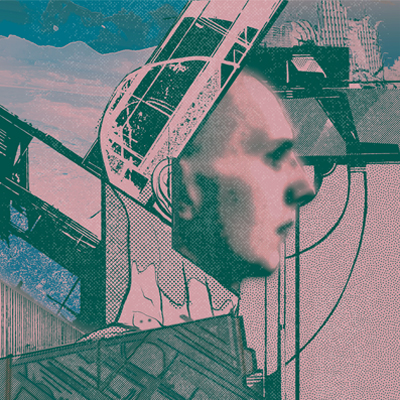
Justin is an archaeologist specializing in architecture, urbanism, and spatial theory, but he can frequently be found writing about video games, too. He has a column with Unwinnable called Forms in Light, which is all about the various connections between games and architecture. You can follow him on Twitter @JustinAndyReeve.